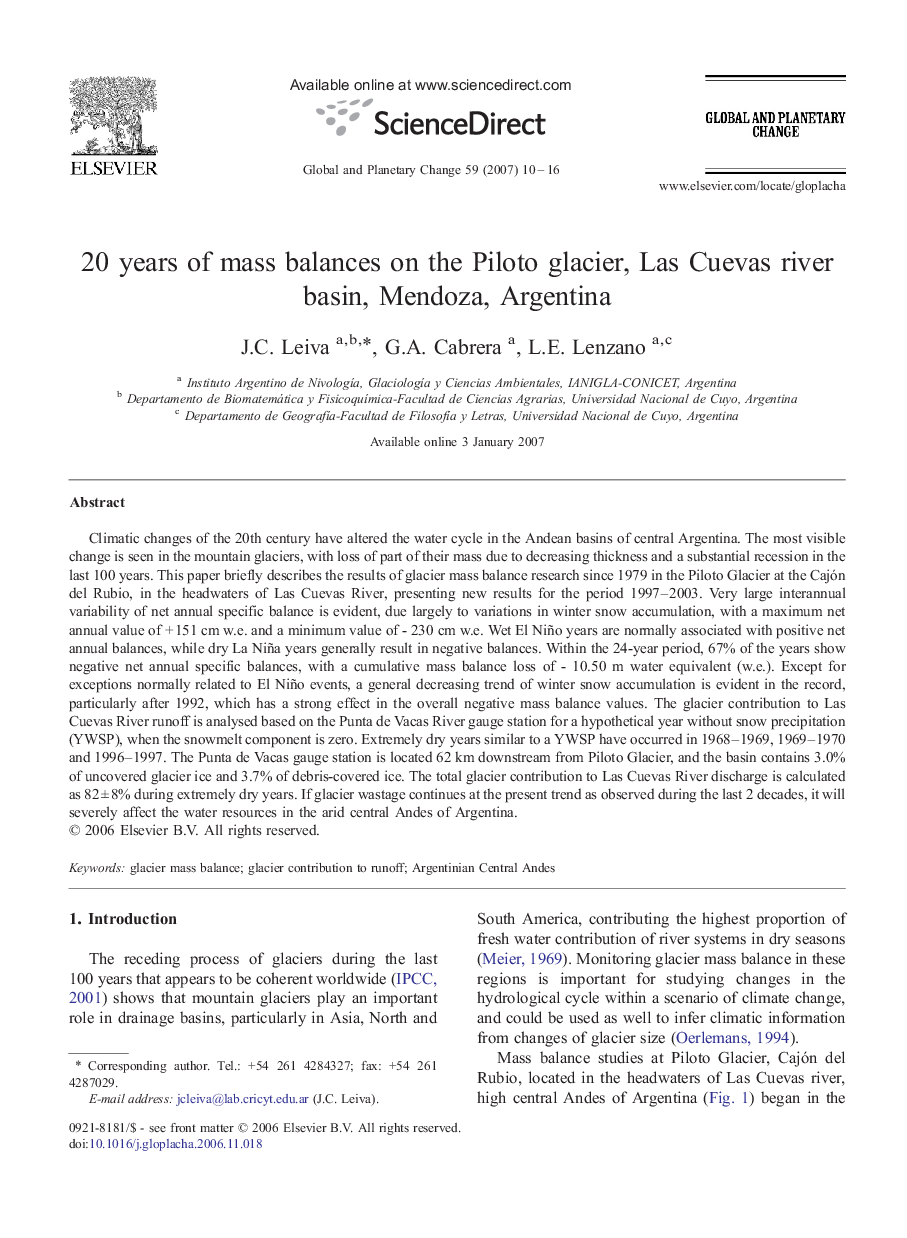| Article ID | Journal | Published Year | Pages | File Type |
|---|---|---|---|---|
| 4464315 | Global and Planetary Change | 2007 | 7 Pages |
Climatic changes of the 20th century have altered the water cycle in the Andean basins of central Argentina. The most visible change is seen in the mountain glaciers, with loss of part of their mass due to decreasing thickness and a substantial recession in the last 100 years. This paper briefly describes the results of glacier mass balance research since 1979 in the Piloto Glacier at the Cajón del Rubio, in the headwaters of Las Cuevas River, presenting new results for the period 1997–2003. Very large interannual variability of net annual specific balance is evident, due largely to variations in winter snow accumulation, with a maximum net annual value of + 151 cm w.e. and a minimum value of - 230 cm w.e. Wet El Niño years are normally associated with positive net annual balances, while dry La Niña years generally result in negative balances. Within the 24-year period, 67% of the years show negative net annual specific balances, with a cumulative mass balance loss of - 10.50 m water equivalent (w.e.). Except for exceptions normally related to El Niño events, a general decreasing trend of winter snow accumulation is evident in the record, particularly after 1992, which has a strong effect in the overall negative mass balance values. The glacier contribution to Las Cuevas River runoff is analysed based on the Punta de Vacas River gauge station for a hypothetical year without snow precipitation (YWSP), when the snowmelt component is zero. Extremely dry years similar to a YWSP have occurred in 1968–1969, 1969–1970 and 1996–1997. The Punta de Vacas gauge station is located 62 km downstream from Piloto Glacier, and the basin contains 3.0% of uncovered glacier ice and 3.7% of debris-covered ice. The total glacier contribution to Las Cuevas River discharge is calculated as 82 ± 8% during extremely dry years. If glacier wastage continues at the present trend as observed during the last 2 decades, it will severely affect the water resources in the arid central Andes of Argentina.
